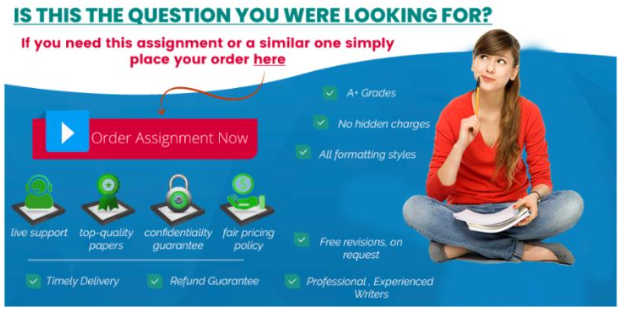WhatsApp Us: at +1 (601) 456-5517
Reach us at: nursinghomeworkservices@gmail.com
Procedures for Behavior Change
This assignment assesses the following Course Outcomes:
PS563-1: Determine treatment outcomes for a behavior intervention plan.
PS563-2: Defend function-based treatment strategies for skill acquisition and behavior reduction based on assessment data.
Assignment Directions
For this assignment, you will provide a response to only one of the case studies below for one of the client scenarios. Use the ABLLS-R (Case 1) or AFLS (Case 2) assessment materials provided in the learning activity and peer-reviewed resources from the university library to support your responses. Please do not copy and paste the whole question into your document. Rather, provide only the question number and your response.
Procedures for Behavior Change
Case Study 1 – Mike Crafone
4-year-old boy
Lives with mother, grandmother, older sister
Identified by his school district as having a developmental delay
Qualified for and enrolled in early intervention program in school district at age 2.5 years
Attendance at the early intervention program has been sporadic due to transportation difficulties the family has been experiencing
Early intervention program has one BCBA on staff, but the program is not behavior analytic in nature and the BCBA has never met or assessed Mike’s behavior
Diagnosed by a developmental pediatrician at age 3.5 years with autism spectrum disorder. According to the developmental pediatrician, he is physically healthy.
Check tips on how to do your Psychology Assignment.
Recommended for ABA services by the social worker at the developmental pediatrician’s clinic
Mother is not certain about what ABA is, but she has heard from other parents on the internet that she can get help at home
School district still is trying to determine what special education services, if any, will be needed when he enters kindergarten in approximately one year from now
Mother reports that he:
Flaps his hands and squeals quite often.
Hits his head with his fists and bangs his head on surfaces. He has broken a tooth from this.
Runs away from her in public places.
Procedures for Behavior Change
Can repeat words that people say to him, but he does not always do it. He does not spontaneously produce words.
Is a picky eater. She often cannot figure out what he wants to eat.
Cannot complete any self-help routines that commonly can be completed by 4-year-olds (e.g., putting on slip-on shoes).
Requests items or activities by leading her by the hand to certain locations.
Is not toilet-trained.
Choose and define two target behaviors for acquisition with this client, provide a rationale for why you chose each behavior.
Develop one clear and measurable short-term and long-term treatment goal for each of the target behaviors for acquisition (4 goals total).
Choose and technologically outline one teaching strategy for skill acquisition for each of the target behaviors. Provide a rationale for the chosen intervention of the target behaviors chosen for acquisition which includes social validity and cultural considerations.
Describe how the chosen intervention is supported by evidence-based literature.
Procedures for Behavior Change
Case Study 2 – Ella Vader
19-year-old girl
Diagnosed with an intellectual disability in elementary school
Received special education services throughout school and graduated with a certificate of completion from high school.
Lives in a group home
Works in a supervised program through vocational rehabilitation
Family is involved and she has visits with them once a week and spends holidays with them
Has received ABA services in the past
Family physician states that she is healthy and has no current medical issues
Is currently prescribed Risperidone
Is having an increase in behavioral issues on the job:
Frequently late to work
Noncompliant with supervisor requests
Walks away in the middle of work tasks
Can become verbally aggressive toward supervisor and coworkers
Personal hygiene issues and showing up for work in dirty clothes, with body odor, and unkempt appearance
Makes inappropriate overtures to coworkers in an attempt to make friends
Choose and define two target behaviors for acquisition intervention with this client, provide a rationale for why you chose each behavior.
Procedures for Behavior Change
Develop one clear and measurable short-term and long-term treatment goal for each of the target behaviors for acquisition (4 goals total).
Choose and technologically outline one teaching strategy for skill acquisition for each of the target behaviors. Provide a rationale for the chosen intervention of the target behaviors chosen for acquisition which includes social validity and cultural considerations.
Describe how the chosen intervention is supported by evidence-based literature.
Please review and follow the assignment requirements in the next tab titled Assignment Details.
Your assignment should be 5-7 page paper, not including the title and reference pages, and should include the following elements:
Title page: Provide your name, title of assignment, course and section number, and date.
Body: Answer all the questions in complete sentences and paragraphs.
Your responses should reflect professional writing standards, using proper tone and language. The writing and writing style should be correct and accurate, and reflect knowledge of skills and practice of the profession.
Reference page: Sources listed in current APA format.
You should include three peer reviewed sources from the ABA literature to demonstrate your interventions are evidence-based.
Use Arial or Times New Roman 12-point font, double-spaced and left aligned.
Use standard 1″ margins on all sides.
Use current APA formatting and citation style.

